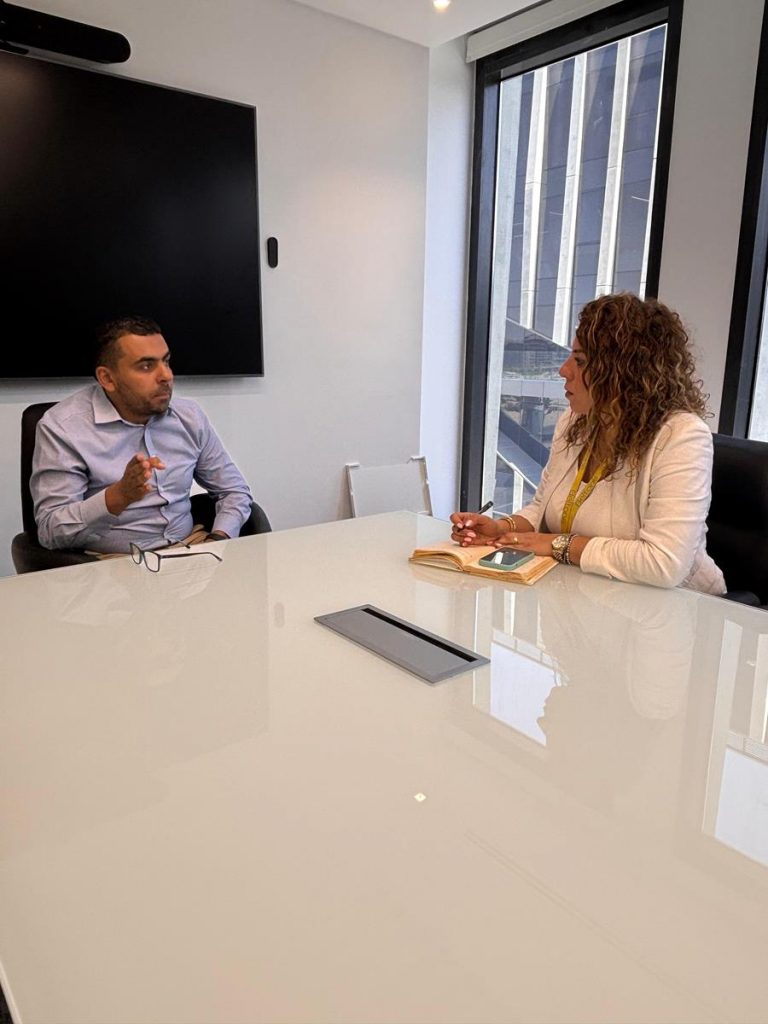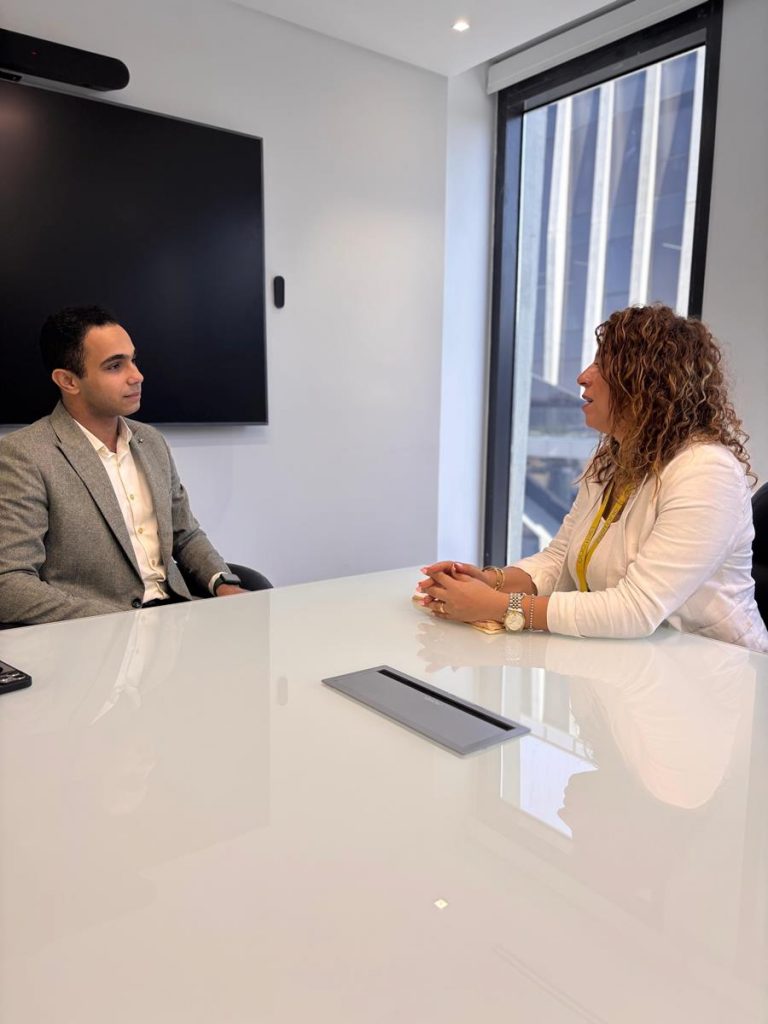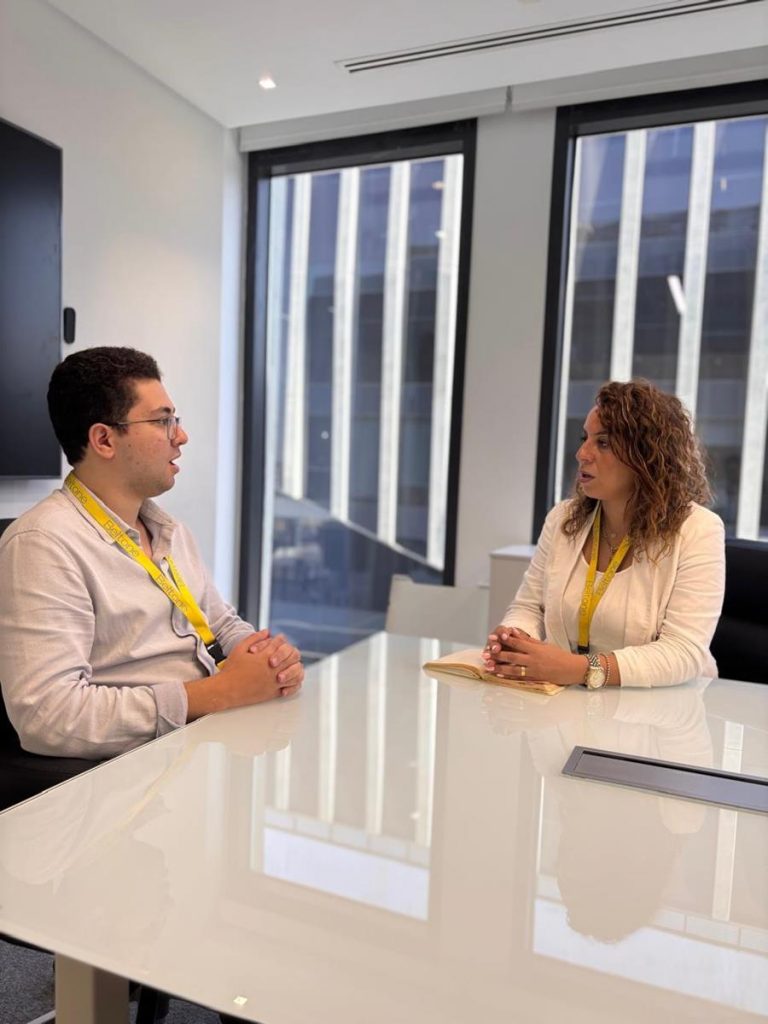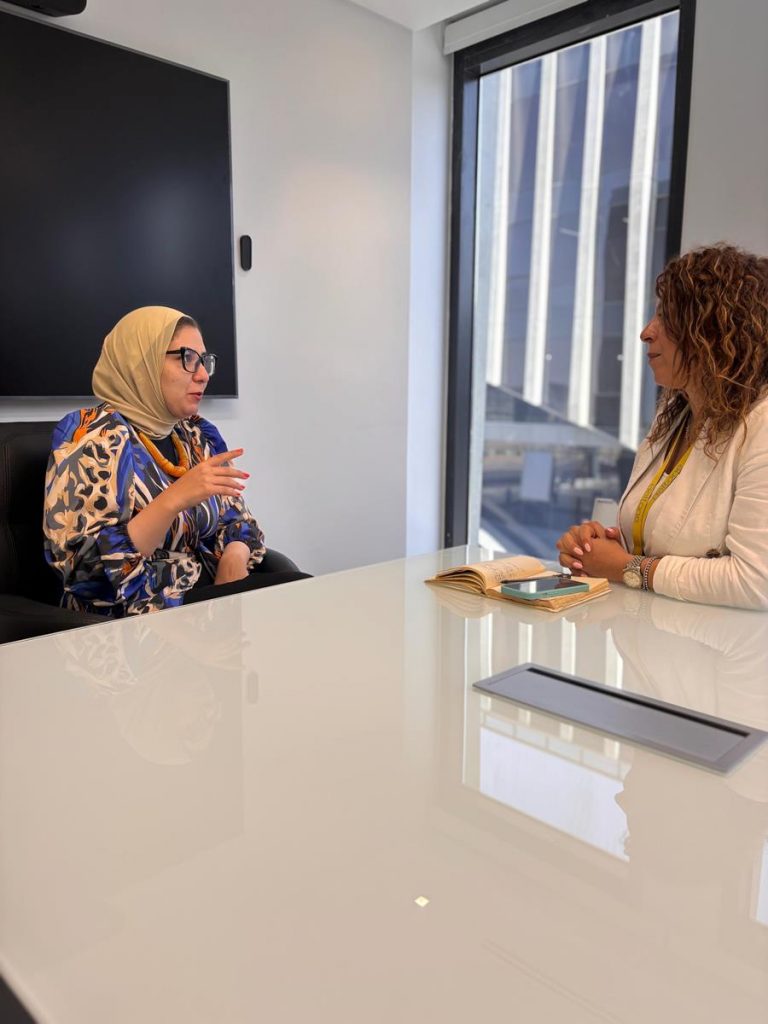
CleanUp Day




Severe Air Pollution Episodes


During Severe Pollution Episodes











Sustainability Message by
Hassan Abdel Nabi
CEO Beltone Mortgage
The Relationship between Sustainability and Mortgage Finance

Integrating sustainability into mortgage finance involves balancing environmental, economic, and social factors to ensure long-term success and positive impact. By adopting sustainable practices, mortgage providers can enhance their operational efficiency, support economic stability, and contribute to environmental stewardship, creating a more resilient and responsible financial system.
This can be achieved through the following factors:
Operational Excellence: By optimizing processes and reducing turnaround times, Beltone Mortgage improves efficiency and reduces resource waste, contributing to operational sustainability.
Customer-Centric Approach: Focusing on customer needs and providing tailored solutions supports long-term client relationships and ensures sustainable business practices.
Technological Investment: Investing in digital platforms enhances operational efficiency and customer experience, supporting sustainable business growth.
Operational Excellence: By optimizing processes and reducing turnaround times, Beltone Mortgage improves efficiency and reduces resource waste, contributing to operational sustainability.
Regulatory Compliance: Adhering to regulatory standards ensures ethical practices and aligns with broader sustainability goals, reinforcing the company’s long-term viability.
Moreover, Beltone Mortgage has achieved notable success and rapid growth in the Egyptian mortgage market, capturing a 22.25% market share in the first half of 2024. This success underscores Beltone’s commitment to providing efficient and seamless mortgage solutions.
Understanding CleanUp Day
TALLINN, Estonia – It is no secret that solid waste presents a pressing global challenge that demands immediate attention and direct action.As one of the largest civic peacebuilding actions in the world, the World Cleanup Day tackles solid waste head-on, coordinating global one-day cleanups that bring together millions of individuals from over 190+ countries. What began in Estonia as a cleanup with 50,000 people in 2008 has evolved into a global movement, reaching the majority of nations worldwide. During the past five years, an astonishing 70 million people have rallied for the cause, mobilizing in a united front for the SDGs. On September 17, 2022 alone, 15 million volunteers were mobilized, dedicating 30 million hours to remove around 60,000 tons of waste from nature in a monumental effort to protect the environment – in just one day!
World Cleanup Day not only defies limitations, it also redefines possibilities. In Afghanistan, individuals carried out cleanups despite widespread opposition to coordinated civic actions. Even amid the war in Ukraine, World Cleanup Day mobilized 120,000 individuals for cleanups in conflict zones. Cyprus witnessed a historic moment as both Greek and Turkish communities united to clean their country and, despite catastrophic flooding, World Cleanup Day activists in Pakistan rallied 15,000 participants to take action.
Meanwhile, in Mozambique, the initiative activated a critical mass of two million people, including a significant number of school children. World Cleanup Day exemplifies the power of unity, resilience, and the relentless pursuit of a cleaner world. Through these sustained efforts, World Cleanup Day fosters a profound and lasting shift in behavior, paving the way for a sustainable future.
As the winner of the 2023 Mobilize category, World Cleanup Day serves as a remarkable catalyst, uniting individuals, organizations, and governments in a collective effort towards environmental sustainability. The initiative’s goal is to engage at least five percent of each country’s population, demonstrating the power of unity in driving positive change. By inspiring widespread participation and active engagement, it harnesses the power of collective action to address pressing environmental challenges. This initiative brings individuals together, raising awareness on climate action, and fostering partnerships between sectors to accelerate progress towards a sustainable world and to achieve the SDGs. It goes beyond awareness, empowering individuals to take tangible steps such as waste reduction and responsible consumption. Through its inclusive approach, it gives hope and belief that change is possible when we act together.
Clean Up Day 2024
This year’s event takes place on Friday 20 September following our addition to the UN Calendar of International Days!
We aim to activate 5% of the world’s population that will catalyst lasting societal change in behavior around mismanaged waste.
211
Countries and
Territories
91M
Global
Polulation
1.1.%
Global
Polulation

91M
Participants

211
Countries &
Territories

95%
UN member
States

1,13%
Global
Population

543,704
Tons of Waste
collected
Municipal Solid Waste "Garbage"
Can be defined as solid or semi-solid materials that are left over from normal daily human activities and are disposed of at their source as waste of no value that deserves to be kept, although it may have value in another location or other circumstances that provide favorable conditions for reuse or recycling operations. Therefore, this classification excludes hazardous, industrial (productive), agricultural, construction, and demolition waste (although some of it may find its way to municipal waste and mix with it, as is the case in the current situation, and therefore it is necessary to deal with it or find independent means and sub-systems that ensure its handling and disposal).
The requirements and guidelines for the
rehabilitation of public landfills aim to:
Improving the methods of final disposal of waste scientifically and practically that reduces the harmful effects of waste on the environment.
Tightly controlling spontaneous combustion
and air pollution.
Preserving the health and safety of residents of neighboring areas from odors, unpleasant sights, diseases, and ignitions.
Maintaining the health and safety of workers
and visitors to the site.
In order to achieve these goals, the following components
must be available in the rehabilitation of public dumps:
Construct a fence around the outer perimeter of the site to prevent unauthorized individuals from entering the site
Surround the site with tall trees such as jasmine and camphor
Provide fire-fighting equipment
Establish a suitable office for supervisors located next to the dump gates to monitor the entry and exit of vehicles and supply it
With basic facilities such as electricity, water, toilets, and telephones
Provide a garage for dump equipment (bulldozers, transport vehicles, etc.) for maintenance work and storage of spare parts and maintenance equipment inside the site
Install a scale to weigh the amount of waste entering the dump
Organize the passage of transport vehicles and loaders into the dump by providing a worker at the beginning of the road into the dump and another at the landing inside the dump so that the passage of vehicles is coordinated according to the turn with dividing the work areas on the site.
A reception site must be designated for waste transport vehicles to wait their turn to dispose of the waste in the dump
Ensure the quality and properties of the soil to make the sides of the dump with proper and safe slopes to avoid any waste (collapses) of the sides on the workers and expose them to dangers in addition to wasting areas of the dump
Provide a paved road for the entry and exit of transport vehicles and loaders to the dump, and the road is designed and constructed at a level and cost that suits the quantity and type (weight) of the equipment using this road; if the road slopes are sharp, the design takes into account the width of the road to be sufficient for the vehicles to maneuver in movement and uses a covering for the road floor that does not erode or lead to the vehicles slipping during rainy periods
Design and construct internal roads in the dump (for movement from one cell to another) at an acceptable level and cost that suits the period and temporary purpose of its use.
Regular inspection, repair, and maintenance of the roads leading to the site to facilitate the movement of vehicles and the continuity of the site’s work with high efficiency
Control the entrance to record the waste received at the site and keep records of the type of waste, its source, and the quantity of the load carried (the quantity is estimated by the size of the cart or weight) in addition to arranging for receiving the waste at the landfill during operating hours only and not allowing cars to enter after the end of working hours; the load must also be inspected if there is any doubt about the nature of the contents or their unsuitability for disposal at the regular landfill site.
Prevent spontaneous combustion in the landfill, and fires must be extinguished as quickly as possible by covering the burning waste with sand, dirt, or the like
Clean the landfill area periodically inside and outside the boundaries of any waste that fell or flew during the various stages of the waste disposal operations through manual collection on the site (a periodic collection of scattered waste) at least once a week.

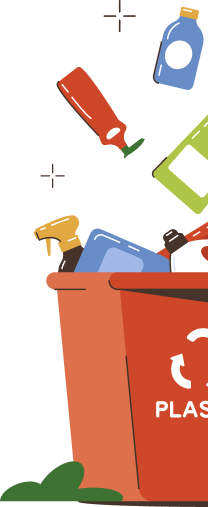
How to Deal with
Severe Air Pollution Episodes
Severe air pollution episodes, often caused by thermal inversion, result in the accumulation of harmful pollutants near the Earth's surface due to stagnant weather conditions. During these episodes, it's crucial to take specific measures to protect health and minimize exposure.


Health Hazards of Air Pollution
Air pollution can lead to various respiratory problems, both short-term and chronic, particularly affecting children, asthma patients, and individuals who exercise outdoors. Increased breathing rates during outdoor activities can exacerbate exposure to pollutants.

Measures to Reduce Impact
During Severe Pollution Episodes:

1. Limit Outdoor Activities:
- Children should avoid playing outdoors.
- Children, the elderly, pregnant women, and individuals with preexisting health conditions should remain indoors.
- Avoid exercising outdoors.

2. Protect Yourself Indoors:
- Close windows to prevent outdoor air from entering.
- Use water sprays indoors to help settle suspended
particles. - Drink plenty of fluids, especially water, to stay hydrated.
- Wear sunglasses when leaving the house to protect your eyes from irritation.

3. Monitor Health and Safety:
- If you experience symptoms of illness while working outdoors, move indoors immediately.
- Reduce direct exposure to sunlight.

What should I do if I am outside when the crisis occurs?
Seek shelter in enclosed spaces and minimize your time outdoors. Use a wet tissue over your nose to reduce inhalation of pollutants. Reschedule outdoor activities, including sports and recreational events, to indoor locations.
What are the Ministry of Health's preparations for air pollution crises?
Hospitals will be fully prepared to handle emergency cases
during pollution episodes
How can air pollution be
reduced?
Implement measures such as banning open burning of waste, ceasing incineration practices, reducing vehicle use, restricting cars in city centers, eliminating diesel fuel in residential areas, and increasing natural gas use for power generation. Avoid burning wood, rubber, coal, or plastic.
How do we get accurate information during a pollution attack?
Stay informed through media channels, which will provide accurate air quality data and weather updates.
How can I, as a citizen, contribute to reducing air pollution?
Conduct regular exhaust tests on your vehicle, use public transportation, limit car use, and carpool when possible. Avoid burning trash, reduce air conditioner use, limit electricity consumption, and refrain from smoking.
By following these guidelines and staying informed, individuals can better manage their health and contribute to reducing the impact of severe air pollution episodes.
Sponsorship Athletes
We believe that Beltone Mortgage is stepping into the world of Padel with a meaningful sponsorship of the Egyptian Padel Federation (EPF) and two exceptional athletes, Aly Zaghloul and Yassin Kareem.
Beltone Mortgage is expanding into sports sponsorship, particularly in Padel, to empower athletes and elevate their game to the next level. Just as we enable people to secure their properties in just three days, we are drawn to sports like Padel and squash, where quick decision-making is crucial on the court.
Our sponsorship aligns with our commitment to supporting rapid, decisive action, both in sports and in helping our clients achieve their goals.
Our partnership with the EPF is a strategic move to engage with the fastest-growing community in the sports world. The EPF is at the forefront of advancing Padel in Egypt through local and international tournaments and initiatives like the “Road to 1000 Juniors,” which seeks to develop young talent. By supporting the EPF, we position ourselves as a key player in the sport’s development and connect with a vibrant and expanding community.
Aly Zaghloul, Egypt’s top-ranked Padel player and a rising star globally, has achieved remarkable milestones. He represented Egypt in the World Cup, is the first Egyptian to win an international tournament, and secured the Arab Championship title in 2023. Supporting Aly allows us to celebrate his extraordinary achievements and future potential, making him an ideal ambassador for our brand.
Yassin Kareem, Egypt’s number one U23 player and a member of the national squash team, exemplifies the agility and skill that align with our brand’s focus. At just 19 years old, Yassin is already ranked among the top players number 151, with over 1000 men’s squash players competing at various levels and could potentially be playing in the next Olympics in four years. His recent victory in the Arab Championship highlights his potential and makes him a perfect fit for our sponsorship. By supporting Yassin, we reinforce our commitment to emerging talent and the rapid decision-making skills that are crucial both on and off the squash court.
Our involvement with the EPF, Aly Zaghloul, and Yassin Kareem reflects Beltone Mortgage’s dedication to empowering athletes and engaging with the rapidly growing Padel community and Squash Community. This sponsorship will position Beltone Mortgage as a supportive and proactive brand in the sports world, showcasing our commitment to fostering talent and building a strong presence in the sporting community.
Waste Segregation from your end!
The Importance of Waste Segregation — Why You Should Sort Your Waste
Waste segregation is the sorting and separation of waste types to facilitate recycling and correct onward disposal.
When waste is sorted correctly, it can save your company money.
Waste Segregation should be based on:
- The type of waste
- The most appropriate treatment and disposal
Sorting your waste makes it easier to understand how to reduce your general waste output, identify items that can be reused and set aside items that should be recycled. Beyond that, however, there’s also a moral imperative to be responsible for how you handle your trade waste.
Failing to segregate trade waste properly means that it will end up mixed in landfills the same way it was mixed in your bins. Waste items like food scraps, paper and liquid waste can mix and decompose, releasing run-off into the soil and harmful gas into the atmosphere.
The law also specifically states that it is illegal to mix hazardous waste or POPs waste — waste with high levels of persistent organic pollutants — with either other hazardous waste or non-hazardous waste.
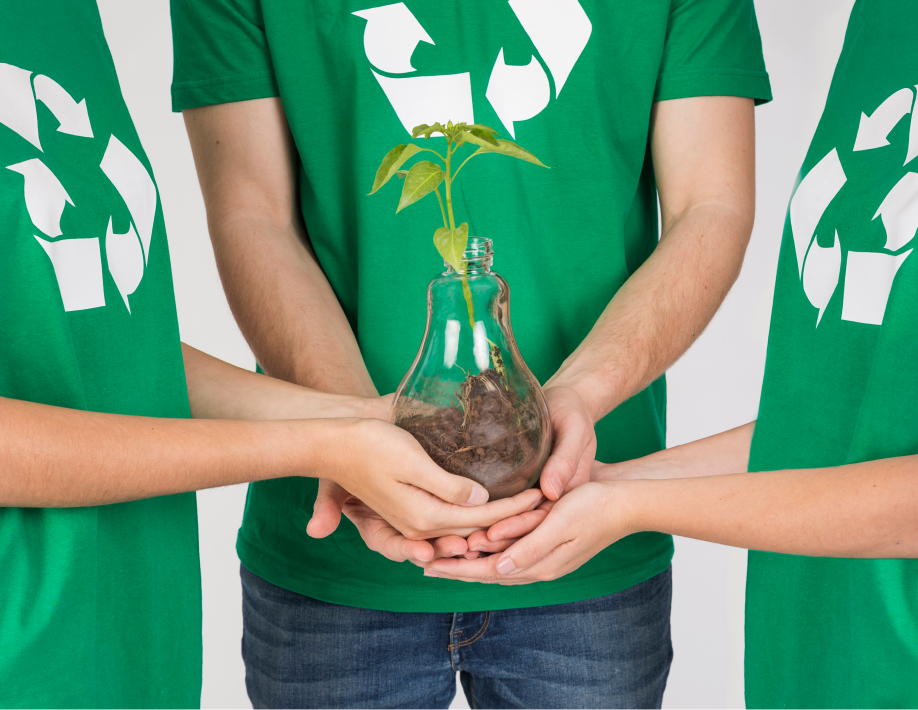
For businesses, the benefits of proper waste segregation include:
At Beltone, we are committed to taking the first step in waste segregation by extending our efforts to all employees, including blue-collar staff.
Educating our workforce on proper waste disposal is not just about implementing policies; it is also about fostering awareness and understanding among our employees. For example, avoiding the mixing of food waste with recyclable materials, such as cardboard and plastics, can significantly enhance our recycling efforts through proper training. To support this initiative, we have placed segregation bins throughout our premises, making it easier for staff to dispose of waste correctly.
1. How familiar are you with Beltone Holding's sustainability initiatives?
Beltone has reached huge miles especially by the new building premises that's committed to environmental sustainability and we are trying to improve the energy efficiency.
Beltone Holding is deeply engaged in sustainability initiatives. For example, they hire individuals with Down syndrome and collaborate with Bekia to recycle waste, with proceeds donated to charitable causes. Additionally, Beltone educates young people on sustainability through creative methods, like the Enviro Clue Game, which teaches children about climate change and inspires them to explore sustainability-related careers.
Beltone has taken huge strides by introducing unique ideas, such as recruiting employees with Down syndrome and encouraging proper waste classification.
I am well-versed in Beltone Holding's sustainability initiatives, including key measures such as health and safety programs and environmental efforts like the "Go Green" campaign, with visible signs and reminders across the company. These initiatives align with Beltone’s commitment to fostering a sustainable and responsible work environment.
Beltone has been actively involved in various sustainability initiatives. They are focusing on: - Developing financial products like green bonds, works with wayana team and investing in energy-efficient equipment and renewable solutions.
I am familiar with Beltone Holding's ongoing efforts to integrate sustainability into its operations. The company has implemented various strategies like (paper waste and general waste management, down syndrome employment program ect…) to reduce environmental impact, promote responsible investing, and engage stakeholders in sustainability-driven goals.
2. Do you believe that sustainability practices are important for Beltone Holding's long-term success?
Sure. By practicing sustainability, it really affects the employees' social, health, and family life.
Yes, sustainability is vital for Beltone Holding’s long-term success. It helps mitigate risks, attract responsible investors, and align with global regulatory trends.
Yes, practicing sustainability positively impacts employees' social life.
Absolutely. Sustainability practices are crucial not only for Beltone Holding’s long-term success but also for the broader community. They help us preserve the environment, reduce waste, and promote responsible resource management. In addition, a sustainable approach enhances the company’s reputation, reduces operational risks, and aligns with global trends toward environmental and social responsibility. These efforts not only contribute to the well-being of our planet but also ensure Beltone’s resilience and competitiveness in the future.
Absolutely, sustainability practices are crucial for Beltone Holding’s long-term success. Adhering to sustainability standards helps companies stay ahead of regulatory requirements, avoiding potential fines and legal issues.
Yes, I strongly believe that sustainability practices are crucial for Beltone Holding's long-term success. By aligning with global sustainability standards, Beltone can enhance its reputation, foster investor confidence, and ensure regulatory compliance, all of which contribute to sustainable growth and competitive advantage
3. Have you participated in any sustainability-related activities or programs at Beltone Holding?
Yes. Actually, I used to review the newsletter sent every month and the annual report.
Yes, I attended a Health & Safety course on sustainability and employee lifestyle
Yes, I have participated in the company’s health and safety course, and I am OSHA-certified, which has further equipped me with the knowledge and skills necessary to ensure a safe and compliant workplace environment. My participation reflects my personal commitment to contributing to the company’s sustainability goals.
Often we work as a one team with employees from wayana.
While I have not directly participated in any sustainability-specific programs, I actively support the company's broader initiatives by adhering to policies that promote environmental responsibility and social governance in our daily operations.
4. What suggestions do you have for improving sustainability practices within Beltone Holding?
- Source sustainable materials from suppliers
- Reduce transportation emissions by implementing a work-from-home policy
- Raise sustainability awareness through campaigns and encourage employee participation
- Offer incentives: reward employees for sustainable practices
- Educate employees and clients on sustainability through training programs.
- Support projects and startups focused on environmental sustainability, such as clean energy and waste management.
- Source sustainable materials from suppliers.
- Raise sustainability awareness through campaigns and encourage employee participation.
- Offer incentives: reward employees for sustainable practices.
One suggestion for enhancing sustainability practices would be to place designated paper recycling bins in every office with a printer. This would encourage employees to recycle wastepaper rather than discarding it in regular trash bins, helping reduce unnecessary waste and promoting a culture of recycling within the company.
We need to create simple videos to help all employees to understand the benefits from sustainability.
To further enhance sustainability practices, Beltone Holding could consider increasing employee engagement through regular sustainability workshops and creating incentive programs that encourage innovative eco-friendly solutions. Additionally, expanding partnerships with local and international organizations focused on environmental and social impact could strengthen Beltone’s efforts in this domain.










